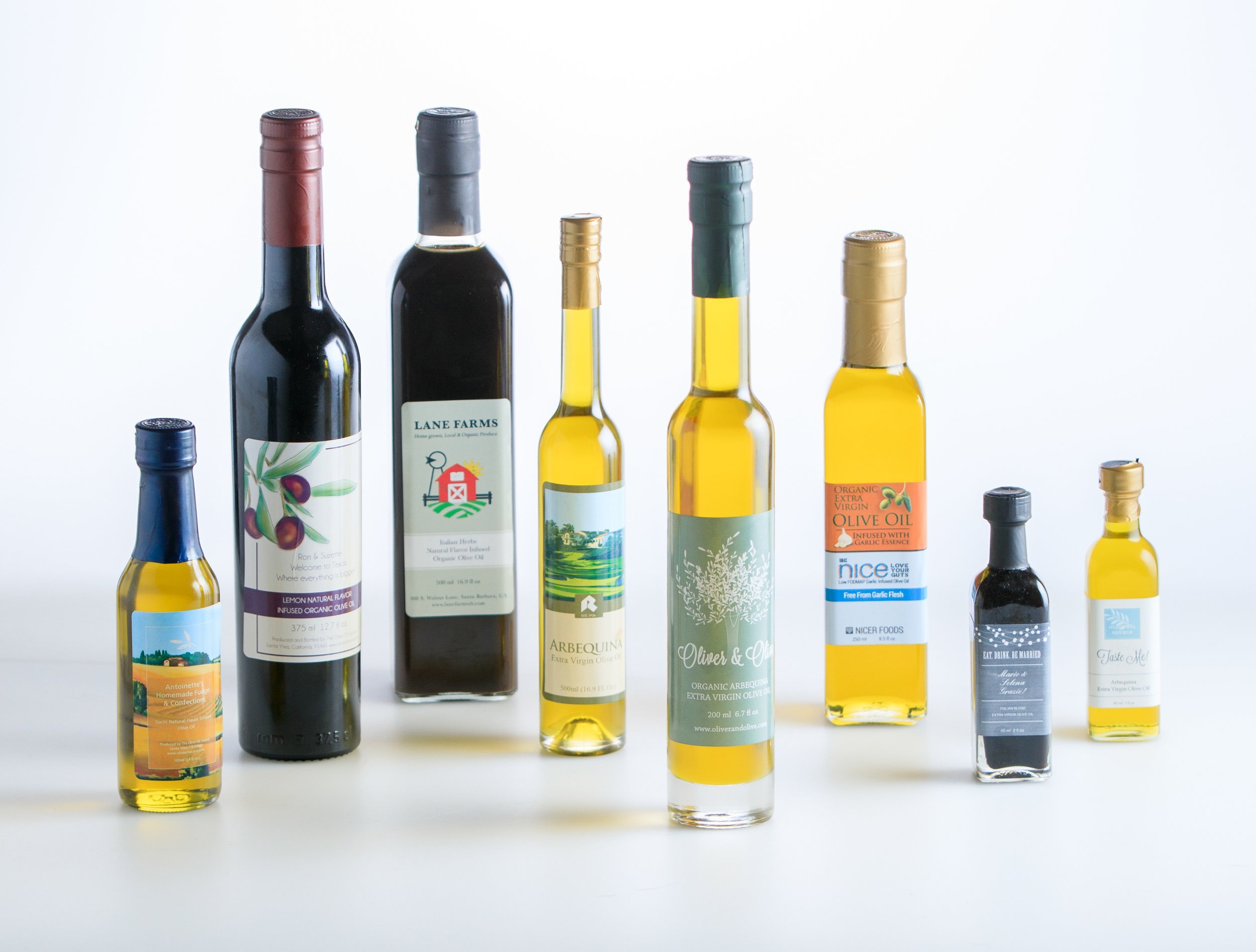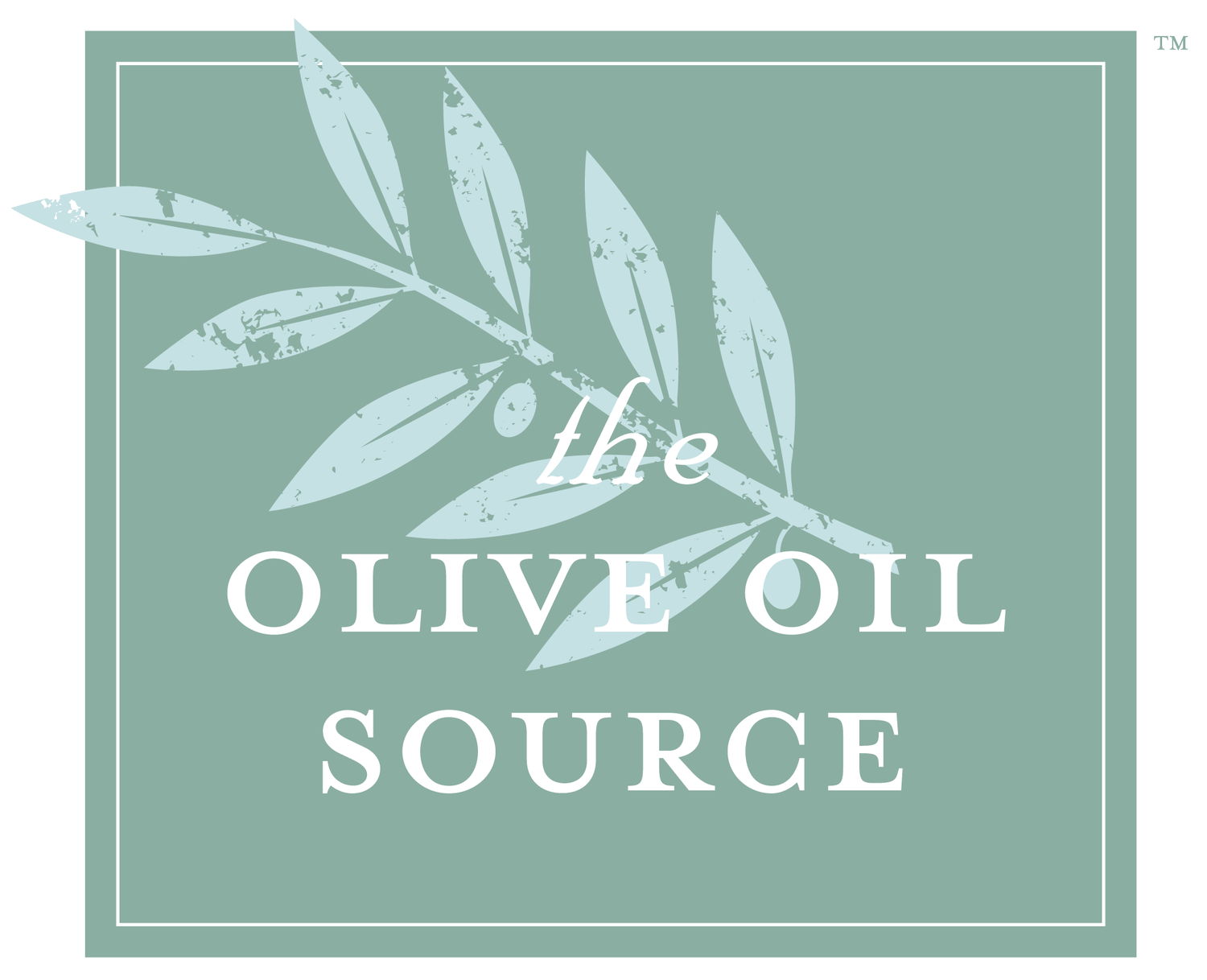
Labeling
Olive oil presents some unique labeling problems. Producers need to create an informative, artistic label that includes the legal requirements for their area. The label should be applied squarely on the bottle with an adhesive that doesn't give up halfway through the distribution channel. In addition, once opened, oil spills shouldn't bleed into the label, turning the product into an eyesore. Many producers bottle special varietal or "nuovo" oils or date their product, which requires printing more expensive small runs. As with bottle orders, label design and production can also take much more time than you would ever imagine, so be prepared to think your label through well in advance. If you do, all of these problems have a solution.
DESIGNING A LABEL
Many producers opt for a professional graphic artist who can create labels that fit into their corporate identity package. The Olive Oil Source Wholesale Store offers a label design service for resellers. If you want just a few labels for a special occasion and a small quantity of oil and/or vinegar, you can customize pre-designed labels by adding your own words and image at The Olive Oil Source Party Favors. Because the labels are pre-designed, small quantities can be produced economically.
Most of the legal requirements for label information are enforced by the U.S. Food and Drug Administration. Their website has helpful information about nutrient and calorie declarations, as does the North American Olive Oil Association, which answers many questions about labeling imported oil. Organic claims guidelines are now enforced by the USDA. California has laws governing appellation. See our labeling regulations page for more details.
Adding more text to your label has advantages and disadvantages. Customers often enjoy seeing serving suggestions or short recipes, especially for flavored oils such as lemon or basil. Too much text, however, can clutter the label. One solution we use for private label customers at the Olive Oil Source is a horizontal format. Areas heavy in text wrap around to the back of round bottles so they don't detract from the logo.
PRINTING A LABEL
Depending on how many labels you need and how often you need them, there are different printing options.
Home Printing: you can print the labels yourself on your home computer with standard Avery labels but there can be problems. Labels made with the more common home ink jet printers will smear if handled with wet or sweaty fingers. Standard label stock is not impervious to oil, so once a bottle is opened, oil drips tend to make for a greasy look.
Small Custom Label Runs: as mentioned above, for special occasions such as wedding favors, corporate gifts, and for any small runs of private labels, try our custom label design and printing service. We will create a unique label for you from one of our existing designs or based on your own artwork. We use heat fixed inks on oil-proof stock so our labels are water and oil-resistant. We have a large number of shapes and designs to choose from.
Small Businesses In-House Printing: you can buy specialized printers and label stock to print your own labels. This is an option that works well for small and varied runs. The labels look quite nice and it allows you to have flexibility on the text, e.g. you could change the harvest year or the "Best by" date. The equipment starting prices are around $2,000.
Digital Printing is another good option to help you get started when you need a quantity of about 1,000 or more. This option has a higher per label cost than offset printing (see below) but is still a relatively cost effective way to try out a design. However, while digital printing is easier and faster than home printing, the quality of labels is not significantly different. Because the paper stock is not coated, it is not resistant to oil stains and scratches.
Offset Printing: most of the labels for commercial olive oils are printed professionally at an offset printer. The process includes making plates for the number of colors used in your design and as a result incurs upfront production costs that are not found in the lower end printing methods. In addition, if your design has an unusual shape or size, you may also have additional costs for a custom die. While that first run may be more costly, reprinting your labels becomes much more cost effective, especially for larger runs. The best reason to invest in this printing method is the quality. You can ask the print vendor for a stock that is or will be coated to protect it from oil stains and scratches.
LABEL APPLICATION EQUIPMENT
If you have a small run and cheap labor, labels can be hand applied. Many companies cost out label application at about 35 cents each if done manually. Label machinery can get the cost much lower.
Automated equipment for bottling lines can apply labels as fast as your bottle filler can feed it. Equipment can be configured to apply glue to paper labels or apply pressure sensitive labels, both typically in rolls. Paper labels are slightly cheaper, but we notice they can sometimes fall off on market shelves leaving your bottle naked.
